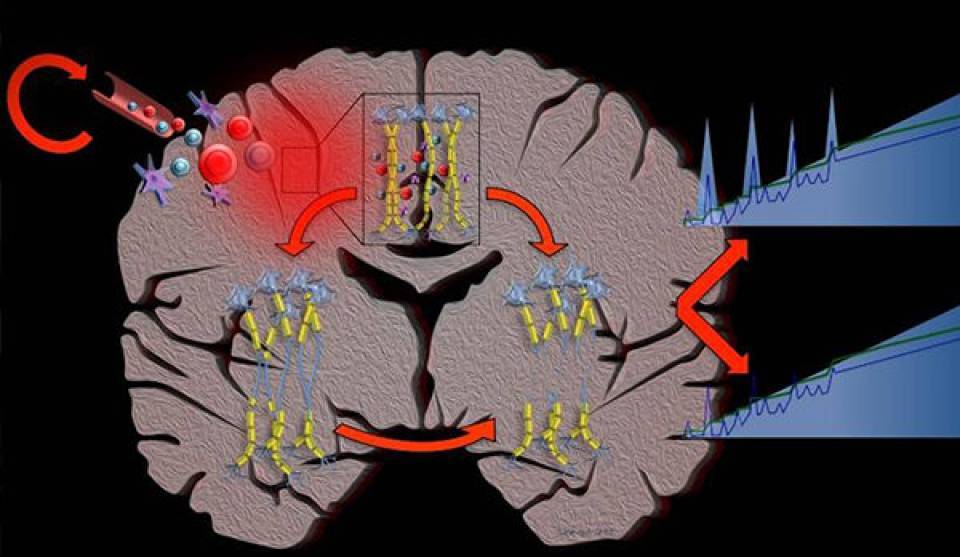MS is an autoimmune disease in which the immune system disrupts the function of nerve cells in the spinal cord and brain. This can cause a variety of problems, including blurred vision, memory problems, paralysis, and more. Symptoms and patterns of disease progression over time can vary between patients, leading to suggestions that MS may actually consist of two or more different diseases.
For this study, researchers hypothesized that MS is a single disease with multiple results in patients, all driven by the same underlying biological mechanism: immune system attack of the protective fibers shielding nerve cells and loss of the axons used by nerve cells to communicate with each other.
To explore this hypothesis, the researchers developed a mathematical model of MS based on experimental data from 66 patients who had been followed for up to 20 years. Using the model, they were able to perform computational simulations of the different known biological processes involved in the disease.
To test the validity of the model, the scientists ran simulations using data from a second group of 120 MS patients. They found that, by changing the intensity of the underlying biological processes involved in MS at distinct times, they were able to successfully reproduce the variability of disease courses seen in these patients.
These results support the hypothesis that that all the symptoms and disease courses observed in MS patients are produced by the same underlying mechanisms that damage nerve cells over time. This implies that, even though it may follow different patterns, MS will worsen over time for all patients.
"This concept has significant therapeutic implications and will drive the development of new therapies because it implies that MS will produce significant disability if suffered for enough time in all patients," explains Dr. Pablo Villoslada. "Indeed, preventing relapses, although very important, will be not enough to achieve good control of the disease", he concludes
Image Caption: The diverse phenotype of Multiple Sclerosis is the consequence of the dynamic damage to the brain. Chronic autoimmune inflammatory damage to the brain produces waves of demyelination (blue line in the graph) and cumulative axonal loss (green line in the graph) in different intensities along time leading to all MS phenotypes. (Author: Dr Santiago Ortiz-Perez, from the Institute of Ophthalmology and Center of Neuroimmunology, IDIBAPS - Hospital Clinic).
Article reference:
Dynamics and heterogeneity of brain damage in multiple sclerosis
Ekaterina Kotelnikova, Narsis A. Kiani, Elena Abad, Elena H. Martinez-Lapiscina, Magi Andorra, Irati Zubizarreta, Irene Pulido-Valdeolivas, Inna Pertsovskaya, Leonidas G. Alexopoulos, Tomas Olsson, Roland Martin, Friedemann Paul, Jesper Tegnér, Jordi Garcia-Ojalvo, Pablo Villoslada
Research Article | published 26 Oct 2017 PLOS Computational Biology https://doi.org/10.1371/journal.pcbi.1005757

